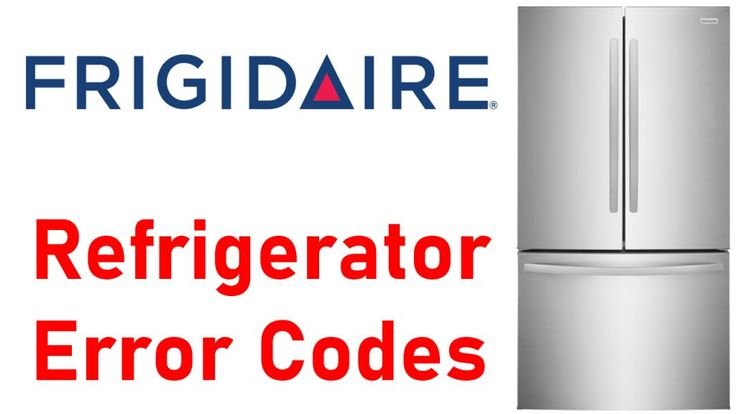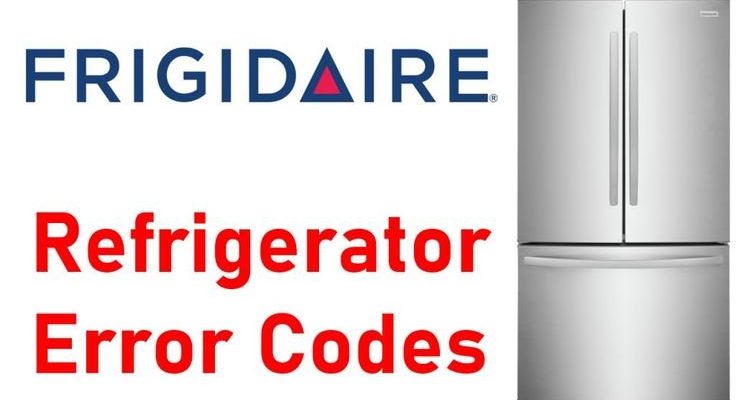
Let’s break it down. The E2 error code is essentially your fridge’s way of signaling that something’s not quite right. Think of it like a car’s check engine light—it doesn’t necessarily mean you have to pull over immediately, but it’s a clear sign that you shouldn’t ignore. Now, the big question is whether your fridge is still safe to use when this code pops up. To answer that, we’ve got to dive a little deeper into what causes this error and what you should do when you see it.
Understanding the E2 Error Code in Frigidaire Refrigerators
So, what exactly is the E2 error code, and why does it show up? In simple terms, the E2 code typically relates to an issue with the temperature sensor. Now, you might be wondering why that matters. Well, the temperature sensor plays a crucial role in maintaining the ideal environment inside your fridge. Imagine if your home thermostat suddenly stopped working correctly. You’d end up either freezing or sweating, right? Similarly, if your fridge’s temperature sensor is malfunctioning, it can’t properly regulate the internal climate, which can lead to food spoilage.
The E2 code is your refrigerator’s way of communicating a problem with this sensor. It’s like your fridge is waving a little flag, signaling for attention. This doesn’t mean your food will spoil immediately, but it does mean your fridge might not be functioning as efficiently as it should. In some cases, the temperature might not hold steady, which can lead to food safety issues over time.
Here’s the deal: the sooner you address the E2 error, the better. Ignoring it might not lead to immediate disaster, but over time, it could compromise not only the freshness of your food but also the longevity of your refrigerator.
Common Causes of the E2 Error Code
Now that we know what the E2 error code signifies, let’s talk about why it happens in the first place. Most commonly, an E2 error points to a malfunction with the temperature sensor. This could be due to a faulty sensor, which, over time, has stopped sending correct signals to the control board. Imagine a broken compass—it can’t direct you properly if it’s not pointing in the right direction.
Sometimes, the issue arises from a poor connection. Wires can become loose, corroded, or damaged, much like a fraying charging cable that won’t keep your device powered. When these connections falter, the sensor’s readings may not reach the control unit, leading the system to display an error code.
In other instances, external factors might play a role. For example, moisture can damage components, or a sudden power surge might disrupt the electronic components. It’s like an unexpected rainstorm that catches you off guard without an umbrella.
Whatever the cause, addressing these issues is key to ensuring your fridge continues to work efficiently. While some fixes might be simple, others could require a professional touch.
Is It Safe to Use the Fridge with an E2 Error?
After seeing the E2 error on your fridge, it’s understandable to question whether continuing to use it is a good idea. The short answer? Yes, you can usually keep using the fridge in the short term. However, there’s a caveat. While it’s unlikely that an E2 error will cause immediate harm to your unit or its contents, it’s not a risk-free situation.
Continuing to use the refrigerator without addressing the error means you’re potentially allowing it to run inefficiently. Think of it as driving with a flat tire—it can get you where you need to go for a little while, but it’s not a sustainable solution and might cause further damage. The fridge’s internal temperature could fluctuate, which isn’t ideal for food preservation and safety.
Additionally, if left unresolved, this small problem could lead to larger issues, possibly affecting other components and requiring more extensive repairs later. So, while your fridge might be “safe” to use temporarily, it’s in your best interest to address the issue sooner rather than later.
Steps to Resolve the E2 Error Code
Ready to tackle the E2 error? You might be relieved to know that some solutions are fairly straightforward. First, consider resetting the refrigerator. This is akin to rebooting your computer when it’s acting up—sometimes, it can solve minor glitches. Unplug your fridge, wait a few minutes, then plug it back in. If this doesn’t clear the code, it’s time to dig deeper.
Next, inspect the temperature sensor and its connections. Much like checking if a lamp’s plug has come loose when it won’t turn on, you’ll want to ensure that all the connections are snug and secure. If you feel confident, you can also check for visible signs of wear or damage. However, if this sounds daunting, or if your efforts don’t resolve the issue, reaching out to a professional technician can be a wise decision.
In some cases, replacing the faulty sensor might be necessary. It’s a bit like needing to buy a new phone charger when your old one breaks. This might involve purchasing the part specifically suited for your model and installing it. While some DIY enthusiasts might find this task manageable, others might prefer leaving it to the experts.
Preventative Measures and Final Thoughts
So, how can you prevent encountering the E2 error in the future? Regular maintenance is key. Just like you’d schedule regular car check-ups, having your refrigerator inspected periodically can help catch potential issues early on. Keeping your fridge clean and ensuring proper ventilation around it can also help maintain its optimal function.
Finally, be mindful of power surges, which can disrupt the fridge’s electronics. Using a surge protector is a simple step that can guard against unexpected electronic issues, much like wearing sunglasses to protect your eyes from the sun.
In conclusion, while seeing an E2 error on your Frigidaire can be concerning, understanding what it means and how to address it goes a long way in ensuring your appliance continues to serve you well. Stay proactive, tackle issues head-on, and your fridge will keep your food fresh and safe for the long haul.
